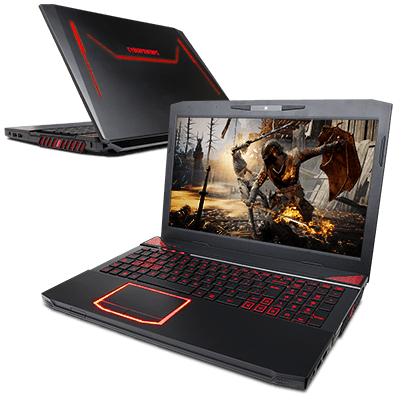
Pillars of Eternity II: Deadfire
Obsidian/Versus Evil
2015’s Pillars of Eternity was considered by many to be the main title which heralded in the new age of classic computer role-playing games. It married the highly-detailed narratives of games like Baldur’s Gate 1 and 2 and Icewind Dale, with the updated visuals and game mechanics that today’s computing technology can deliver.
Right after Pillars dropped the race was on—other classic-themed RPG games followed suit and we saw the release of titles such as Tyranny, Shadows: Awakening, and Pathfinder: Kingmaker, as well as many others. And that’s not to mention all of the re-masters and re-imaginings of many of the classics from the 90s themselves.

Not one to rest complacently on their laurels, developers Obsidian recently delivered a double-barreled blast of a follow-up with Pillars of Eternity II: Deadfire, the direct sequel to their 2015 hit. Or, perhaps I should say double water hose blast—you see, part deux takes place across a sprawling Caribbean-like archipelago chain of islands, a marked departure from the first game’s more traditional RPG environs.
Thankfully, although you don’t have to have played the first game in order to get what’s going on in Deadfire, if you did complete the first game you can port your band of characters over via a handy save game feature.
Game mechanics-wise, Deadfire is pretty much right in line with its predecessor. Character creation is a highly involved process which is designed to replicate how us real geeks create characters at the beginning of any tabletop RPG campaign. However, there is simply more to play with this time around—more classes, specialties, talents, and so on.

Adventuring throughout Deadfire’s vast environs is very similar as well. You’ll do most of your exploring in real-time, while combat is broken into real-time but features a nifty pause mechanic that allows you to freeze time in order to issue out tactical commands to your various avatars. And just like the first game, you’ll probably find yourself growing rather fond of each of your characters so you’ll want to utilize this pause feature in order to increase their chances of survival.
Deadfire also ramps up the overall level of difficulty considerably. You’ll find that your hardy band of adventurers has obtained a new ship with which to navigate the treacherous seas, but it begins with barely any sort of useful gear or weaponry. In order to survive you’ll have to sail around the archipelago and look for seaports where you can buy upgrades for your vessel, or just rip them off of the ships that you happen to defeat in battle.
The main backstory of Deadfire involves a renegade god named Eothas who has possessed a colossus wrought of stone. You’ll quickly learn that your character’s life force is mysteriously tied to Eothas and that only by following the rampaging god to the archipelago did the rest of your party manage to save your life.

Your overall goal is to investigate clues left behind in the destructive wake of the rampaging god that will enable you to eventually learn why all this is happening. As you travel throughout the islands you’ll discover the more settled areas such as towns and ports of commerce as well as more deserted ones where all kinds of ancient horrors lie.
Maritime combat, a new addition to the Pillars series, is handled quite well. Ship-to-ship engagements are turn-based affairs and make good use of both your character’s various abilities and your ship’s gear and weaponry. Deadfire’s naval combat begins with the positioning of each party’s vessels as they seek to maneuver into the best tactical spots they can in order to bring their weapons to bear on the enemy.
If engagements get closer in you’ll enter a boarding role where everything switches over to the real-time mode just like regular, ground-based combat. These battles can be quite dramatic and reminded me of some of the grand old pirate films of the past, where swashbuckling corsairs crossed steel with grizzled pirates. Thankfully, it still features pause-able combat, because the environs are much more restrictive and closed off.

Deadfire is a grand maritime adventure which is just brimming with all sorts of interesting content. It is so engaging that, just like its classic processors, can keep you up into the wee hours of the morning. It’s also loaded to the gills (couldn’t help myself) with excellent writing, beautiful graphics, and an immersive storyline with many twists and turns. Pillars of Eternity II: Deadfire is a highly recommended isometric RPG that will appeal to any lover of fantasy and adventure.
SCORE: 89%
Pillars of Eternity II: Deadfire features great graphics that make its classic RPG gameplay truly shine. However, you want to have a pretty beefy gaming PC or gaming laptop in order to play it at a decent framerate. So, you may just want to invest in a decent gaming rig:

Visit CyberpowerPC’s website to check out all of the other great deals as well!